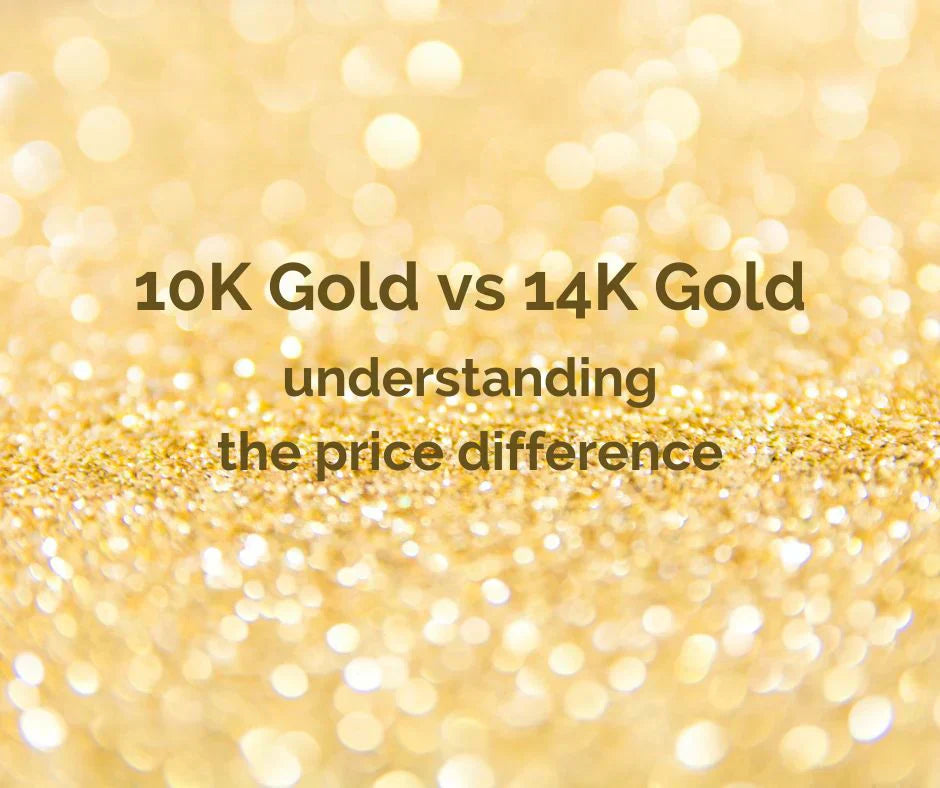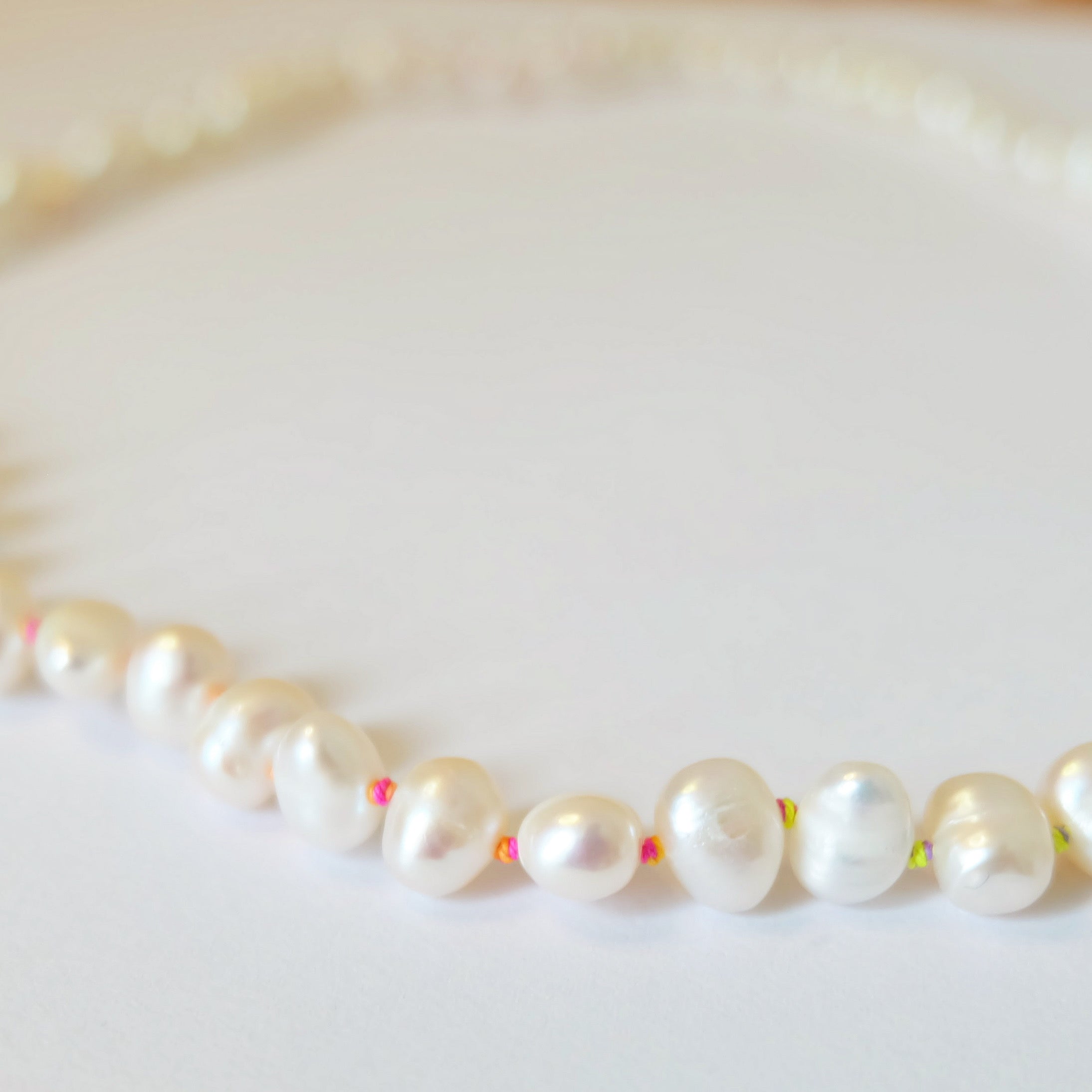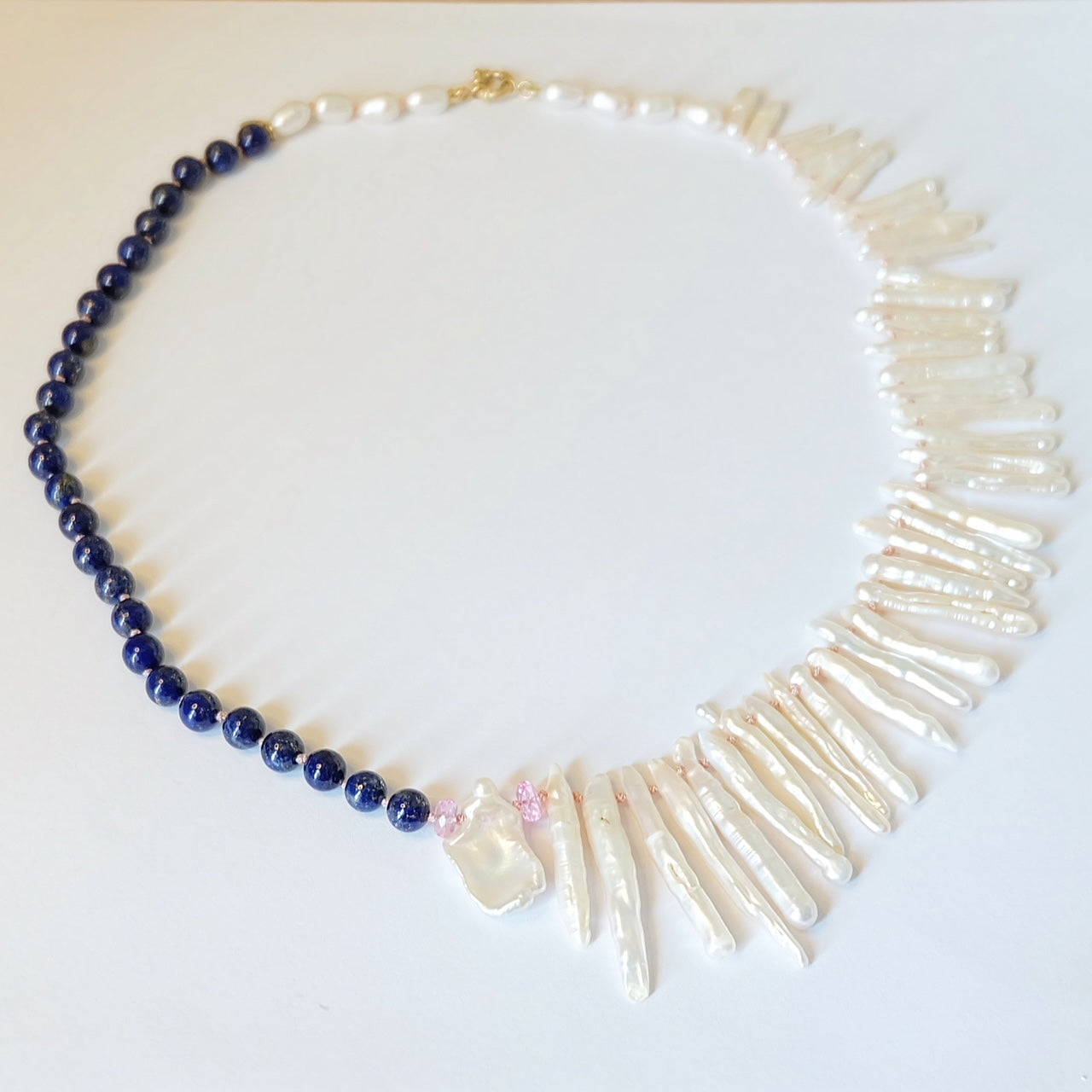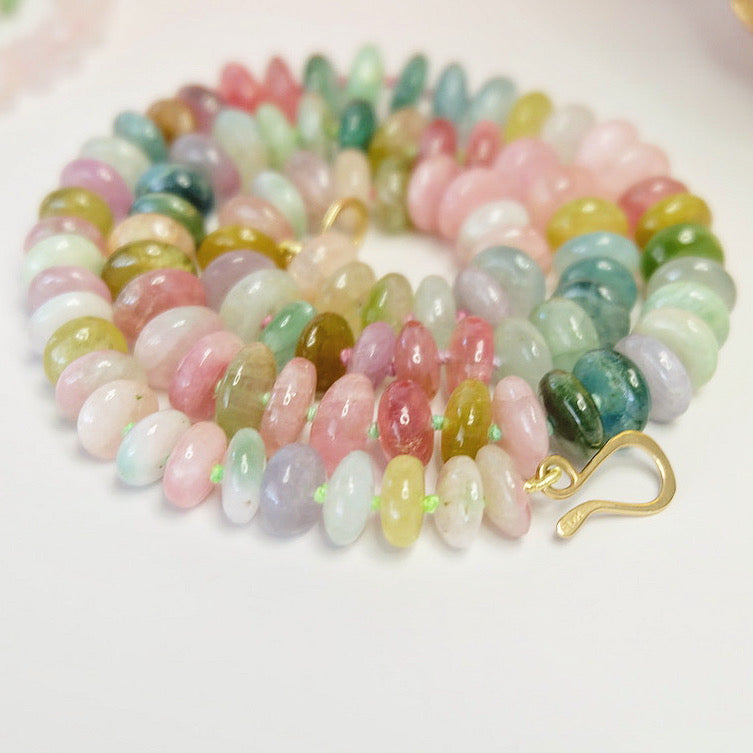
10k or 14k Gold: Which Is Better for You?
Share
Understanding Gold Purity: 10k or 14k Gold
Gold purity is measured in karats. Pure gold is 24k. When we talk about 10k gold, it has 41.7% gold and 58.3% other metals. This means it is less pure than 14k gold, which has 58.3% gold and 41.7% other metals. The amount of gold in the jewelry affects how it looks, how strong it is, and how much it costs.
When choosing between 10k or 14k gold, think about what you want in your jewelry.14k gold has a richer color and is more valuable. On the other hand, 10k gold is stronger and usually costs less.
Shop 14K Gold Jewelry
Love the richer color and skin-friendly comfort of 14K gold? Our jewelry is handcrafted in ethically sourced 14K gold for timeless shine and everyday durability. Perfect for rings, necklaces, and pieces you’ll wear for years.
💎 Shine in 14K Gold
Timeless, versatile, and made to last — explore our collection of 14K gold jewelry, crafted with ethically sourced precious metals.
Shop handmade 14K Gold Jewelry ›
Durability and Wear: Which Gold Lasts Longer?
If you want something that lasts, 10k gold is the better choice. Because it has more other metals, 10k gold is harder and can resist scratches and dents. This is great for people who are active or for jewelry that you wear every day, like wedding bands.
14k gold is not as hard as 10k gold because it has more gold in it. However, it is still strong enough and is less likely to irritate the skin for people who are sensitive to metals. Many people think of 14k gold as more luxurious and special.
Many people think of 14k gold as more luxurious and special.
Cost Comparison: Budgeting for 10k and 14k Gold
When choosing between 10k or 14k gold, cost is an important thing to consider. Generally, 10k gold is less expensive because it has less gold in it. This makes it a popular choice for people who want to save money or buy larger pieces of jewelry without spending too much.
On the other hand, 14k gold costs more because it has a higher amount of gold. This can be a good investment if you want a piece of jewelry that is worth more over time. So, if you are looking for something special and valuable, 14k gold might be a better choice, even though it costs more. An inexpensive option when looking for gold jewelry are 14k gold charms.
Color and Appearance: How 10k and 14k Gold Are Different
10k and 14k gold look different from each other. 10k gold has a lighter or less shiny look because it has more alloy metals mixed in. This can be good for people who like a softer, more simple style.
On the other hand, 14k gold has more gold in it, so it has a brighter and richer yellow color. Many people choose 14k gold because it looks more elegant and traditional in jewelry.
color. Many people choose 14k gold because it looks more elegant and traditional in jewelry.
Understanding the Karat System: What Do 10k and 14k Mean?
The karat system is used to measure the purity of gold. Pure gold is 24 karats, meaning it is 100% gold. When gold is alloyed with other metals to increase its durability, the karat value decreases. 10k gold is 41.7% gold and 58.3% other metals, while 14k gold is 58.3% gold and 41.7% other metals.
This means that 14k gold has a higher gold content than 10k gold, which can affect not only its appearance but also its properties when it comes to wearability and skin sensitivity.
Alloys and Skin Sensitivity: The Key Differences
The metals mixed with gold to create 10k and 14k gold are known as alloys, and these can include copper, nickel, zinc, and silver. These alloys can sometimes cause allergic reactions, particularly in individuals with sensitive skin. Nickel is a common allergen that is often found in lower karat golds.
can include copper, nickel, zinc, and silver. These alloys can sometimes cause allergic reactions, particularly in individuals with sensitive skin. Nickel is a common allergen that is often found in lower karat golds.
Since 10k gold contains a higher percentage of these alloy metals, it may be more likely to cause skin irritation compared to 14k gold, which has a higher gold content and fewer alloy metals. Therefore, for sensitive skin, 14k gold may be a better choice.
Yellow Gold: Does the Shade Matter for Sensitive Skin?
The color of yellow gold can vary depending on the mixture of alloys. Generally, higher karat gold like 14k will have a richer yellow hue compared to 10k gold, which can appear slightly paler due to the higher percentage of other metals.
slightly paler due to the higher percentage of other metals.
While the shade of yellow gold itself does not directly impact skin sensitivity, the metals used to achieve that shade do. Therefore, the focus should be more on the alloy composition than the color itself when considering options for sensitive skin.
Comparing Durability and Maintenance of 10k vs 14k Gold
10k gold is generally more durable than 14k gold due to its higher concentration of harder alloy metals. This makes 10k gold more resistant to scratches and dents, which can be a practical consideration for everyday wear.
However, 14k gold, while slightly softer, offers a good balance between durability and higher gold content. It requires a bit more care to maintain its appearance but is still suitable for regular wear.
suitable for regular wear.
Making the Right Choice: Factors to Consider for Sensitive Skin
When choosing between 10k and 14k gold for sensitive skin, consider the following factors: the likelihood of allergic reactions to certain metals, the intended use of the jewelry (everyday wear vs. occasional wear), and personal preference for the color and appearance of the gold.
Ultimately, 14k gold is often recommended for those with sensitive skin due to its higher gold content and lower percentage of potentially irritating metals. However, individual experiences may vary, so it's always good to consult with a jeweler and possibly test the metal on your skin before making a purchase.
Which Gold Is Right for You? Important Things to Think About
Choosing between 10k and 14k gold depends on a few things, like how much money you want to spend, your daily activities, and what you like best. If you want something strong and affordable, 10k gold might be the best option for you. It’s great for wearing every day and won’t get damaged easily.
want to spend, your daily activities, and what you like best. If you want something strong and affordable, 10k gold might be the best option for you. It’s great for wearing every day and won’t get damaged easily.
If you want more gold and a prettier look, and you don't mind spending a little more money, then 14k gold is a great choice. It is strong but still has a nice shine, and it’s less likely to irritate sensitive skin. In the end, the best choice is the one that fits your needs and wants.















































